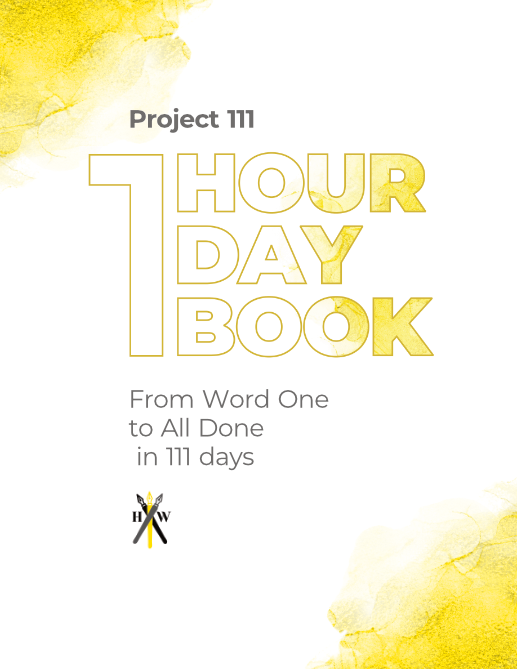I still remember the feeling I had when I started my first creative nonfiction segment of a writing class: dread.
Perhaps like many of you, I found release and incredible enjoyment while reading fiction. In Sci-Fi, I could explore strange worlds and glimpse the possibilities of the future. In fantasy, I could watch magic unfold before my very eyes while building relationships with other-worldly creatures. Even in classic and contemporary literature I could explore humanity from the comfortable lens of suspended disbelief.
But then I would hear the word nonfiction. Something deep inside me seized up at the mere notion of reading reality. Words like “boring”, “pointless”, and “unappetizing” came to mind. I had thoughts of school and text books, and I didn’t need anymore of either of those.
Yet, when I took the class and learned the lessons, I realized what I never would have imagined: writing creative nonfiction can actually be fun! And guess what, reading it has the potential to bring as much joy and wonder into your life as fiction.
Beyond just enjoying reading and writing creative nonfiction, there are many principles you can apply to improve your fiction craft.
In this article we’ll go over some of the tenets and forms of creative nonfiction and ways you can transfer your newly gained knowledge into your fiction writing.
Table of Contents
Creative Nonfiction: What is It Anyway?

Creative nonfiction is an umbrella term for the notion of “true stories, well told” (according to creativenonfiction.org). Now, I have plenty of problems with the term “true stories” because plenty of fiction constitutes a true story, and you can often find and understand truth better in a fictitious story than a “true” story. But the idea is creatively telling stories of what actually occurred in our reality.
All storytelling is inherently creative. Creative nonfiction writing usually involves specific forms that vary vastly, letting you find your favorite type of storytelling within the broad genre.
Creative nonfiction writing consists of personal essays, memoir writing, true crime, blogging, and much more. Oftentimes these forms will blend storytelling, journalism, and poetry into a swirling concoction of words that is every bit as capable of changing hearts as fiction.
My favorite writer, Edward Abbey (I know he’s controversial for plenty of reasons), has written plenty of fiction and nonfiction, and I think he’s a great example of the ways the two genres can improve each other. Granted, Edward Abbey had such a poetic way of writing that even his journals were beautiful (yes, you can read his journals, and yes he probably was a little bit insane).
One of his most famous pieces of nonfiction is Desert Solitaire. He had plenty of essays on nature, in the vein of Annie Dillard, Thoreau, and a slew of others, but Desert Solitaire encapsulates the reasons people enjoy (or absolutely hate) Abbey’s writing. He writes beautifully with such ease while simultaneously being abrasive and unabashed. The book follows the meanderings of his mind as he muses about the American deserts of Utah and Arizona while splicing in his views on religion, national parks, conservation, and so much more.
Some of creative nonfiction’s beauty comes from the rawness a writer can include. Rather than simply focusing on storytelling, nonfiction writers (especially in essay form) can follow the whims of their philosophies and explore concepts through writing.
Another astounding capability creative nonfiction writers can boast comes in the form of compounding meaning. The 2014 book, Just Mercy, presents us with another form of creative nonfiction. This book has a main through-line of a lawyer helping an innocent many escape death row, but the book is so much more than just that story (something the movie isn’t able to show, so read the book too).
Bryan Stevenson weaves together stories from his personal experience, statistics on the American justice system, and depictions of real people to create a tremendously moving book for the reader. Just Mercy includes so many stories that the reader can follow while understanding the context of the stories through his use of facts and statistics.
Another popular form of creative nonfiction reveals just how blurry and practically nonexistent the barrier between fiction and nonfiction can be: true crime.
In Cold Blood by Truman Capote brought this type of story into the limelight. While other books had followed the idea of the “nonfiction novel”, Capote’s novel was an instant success and became foundational and highly influential in the genre.
The nonfiction novel uses the storytelling elements of a novel, such as structure, dialogue, rise and falls of action, and so forth to tell the story of events that actually occurred.
In Cold Blood is a great example of how fiction and nonfiction can blend. At one point Capote claimed that every word of it was true, while also presenting dialogues and moments that he simply could not have heard and that no one would have recorded.
He tells a “true story”; a pair of murderers killed an actual family, and he includes many instances that he found from videos, transcripts, interviews, and firsthand accounts.
The true crime novel and other nonfiction novels teach us that even though we call it nonfiction, most creative writing has elements from other genres, whether fiction, nonfiction, or poetry.
No story can truly be nonfiction, even history text books get things wrong. Creative nonfiction recognizes that and gives creative liberties to the writer.
What We Learn from Creative Nonfiction
You may have read about creative nonfiction and thought to yourself, I’d actually like to give it a try! If so, that’s great! This type of writing is just as satisfying as any kind of fiction, and there’s definitely a market for it.
But, maybe you’ve written fiction your whole life and love it more than anything. That’s great too! You know we love fiction over here at Habit Writing. This next part of the article should help you as a fiction writer learn ways to include writing techniques and styles from nonfiction.
1. Memoir

The memoir is a special kind of nonfiction book that traces important moments in one’s life from personal experience. This article explains what makes a memoir a memoir. Basically, where an autobiography follows one’s entire life, a memoir usually chooses a pivotal moment and captures it in novelistic storytelling.
This type of book sells best when you’re already a famous person. Both of the Obamas, for example, have sold memoirs which have become bestsellers. But, there’s plenty of room for memoirs in fiction (where you don’t need to be famous) or at least take some of what memoirs do really well and include it in your story.
The memoir’s focus on key moments of one’s life is a great way to trim down your novel and make sure that you include only the important things. I don’t know of many fantasy memoirs, but I think you could do well to write one. If you so choose, you might think to write the memoir from the perspective of a fantastical race.
What would be a cultural turning point in their life?
What makes them important enough to write a memoir?
How will you include worldbuilding elements into this “narrative nonfiction” that’s entirely fiction?
Memoirs can be very raw in their emotions and the lessons learned in life. With your fantasy memoir, you should do everything you can to capture that style so you can play with the tropes and conventions of this particular genre.
2. Essay

As far as I know, there haven’t been too many fictional essays that have gone very far. But that doesn’t mean you can’t give it a try!
We won’t, however, discuss that idea very much in this section. Essays can teach us about fiction writing by their style. Creative essays, especially personal essays, play with structure unlike most other types of writing.
Take, for example, the braided essay. This type of essay usually has three seemingly unconnected topics that the writer will weave together, revealing their interconnectedness and finishing the essay with a punch to the reader’s gut.
I have only written a few braided essays in my life, but in one of them I had song lyrics from a bunch of disparate songs as one strand, a story of my childhood looking at trees as another, and coral bleaching as the third. The culmination of those strands was to talk about how my childhood innocence led me to love nature, and maturation led me to understand the destruction of the planet.
Creative essays work so well because they produce feelings in the reader and use language that grips their audience. You probably won’t get to fictionize the essay, but you can definitely try to produce those same emotions and language moments in your novel as the essay does.
You can also try to learn from the essay’s structure and include that in your novels. Maybe you’re intrigued with the braided essay and want to novelize that concept. You could have three seemingly unrelated strands of your story and then weave them together to have an explosive ending where everything makes sense at once.
An example of this type of storytelling can be seen with Dunkirk. Christopher Nolan loves his non-linear storytelling (and we love him for it), and Dunkirk is no exception. Where a braided essay uses unrelated topics, this movie uses three stories in different times and elevations and connects them all near the end of the movie.
A novel can certainly do that too. You should give it a try! (Or start by writing a braided essay and see if you enjoy it.)
3. Nonfiction Novel

The nonfiction novel is a doozy to write. Especially if you’re writing in true crime, you need to do a ton of research. If you’re writing about real people and events, you need to be sure you have everything done correctly or else you’ll likely see a torrent of backlash.
That being said, you can definitely take the style of this novel and completely fictionalize it, which would remove most of the necessary research. The true crime novel already has borrowed so much from fiction as it reads like a novel, so if you were to make a fantasy or sci-fi true crime novel, you’d do well to follow the tone of these books and could actually make some great comedic moments.
A fictional true crime sounds oxymoronic (because it is), but I think the interview aspect and breadth of storytelling could definitely intrigue readers.
4. The Feeling of Creative Nonfiction

Creative nonfiction has many more types of writings, and going through all of them in this article probably wouldn’t prove very helpful. Something I would suggest, though, is to find what kind of nonfiction you enjoy most. For me, it’s essays on nature. For you it might be travel writing or literary journalism (like The New Yorker).
Wherever your interests lie, you should read at least a bit of nonfiction. Because these narratives and writings occur in our actual world, they can play on the shared stakes we feel as humans and produce some powerful emotions in their readers.
I firmly believe that you can make a fictional world so convincing that you’ll be able to get in the mindset of writing nonfiction from their world and fiction from our world. That sort of mentality will help you write believable material even if it completely contradicts whatever rules and culture our planet and species has.
When you read these things, pay attention to how the authors word things, set up their writing, and produce meaning. Maybe you’ll love one of these genres so much you’ll master the structure and conventions to the point where you could write a fictional parody on the genre.
Whatever you decide to do, just remember that plenty of successful creative nonfiction incorporates poetry and poetic language. This inclusion has seemed absent from fiction for a long time. You would do well to see if there’s a place for that in your novel as well.

Our 84-page book planner and 111 day writing course.
Conclusion

Creative nonfiction has such a breadth of writing that pinning it down completely seems impossible. Yet, despite that broad term, there’s plenty that we can learn from this type of writing and include it in our fiction.
If nothing else, knowing how these stories and forms function, you can create more believable fiction. You can take the writing conventions and write them from a fictional character‘s perspective. You can try to make a travel writing/food writing collection from a planet that doesn’t exist with food that would make a human squirm but a fictional species delight.
The fuzzy middle ground between fiction and nonfiction has so much room to be explored, especially in sci-fi and fantasy.
Read a lot in this genre. Take notes on how the author conveys emotion and meaning. I guarantee that you can find something in it that you love, and even more so, that you can use in your fiction writing.
For more helpful lessons on writing, check out the Habit Writing blog!
gavinwride
Gavin is a fantasy author, short story enthusiast, and nature lover. When he’s not reading, writing, or exploring the outdoors, he is likely playing games. His board game collection is probably too big for someone living in a small apartment, and he has enough yet-to-be-played video games to fill a lifetime. His favorite book is "The Name of the Wind". His favorite author is Edward Abbey. His favorite game is "Dark Souls III", and he’d be more than happy to spend the day talking about lore, bosses, and game mechanics.
Our 84-page book planner and 111 day writing course.
